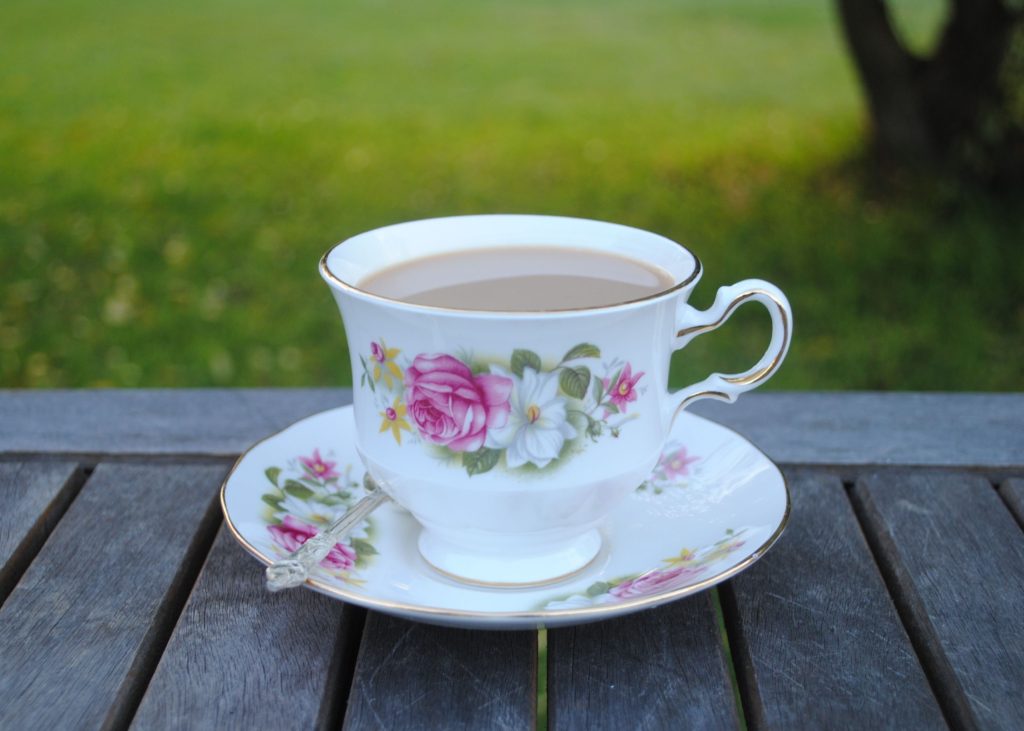
For many of us the ritual of tea provides a sanctuary in the day when we can find some peace and rejuvenate our energy. The hot fragrant tea in our cup is soothing and the process of making tea can be just as enjoyable.
Tea-time can also be a great time for exploring ideas and making life-changing plans. Here are ten tips for ensuring your next cup is brewed to perfection.
Use fresh water
Pour fresh cold water into your kettle and turn it off when it has just boiled. Re-boiling water or letting water continue to boil de-oxygenates the water and this effects the taste of your tea. If you have tap water with a high mineral content try filtering your water.
Choose the perfect cup
Select a cup that you associate with a positive memory and that feels nice to hold. Fine china or a delicate hand-made cup is best.
Your teapot
Pre-heat china and earthenware teapots by filling them with boiling water to at least a quarter full and leaving them for 30 seconds. Clean your teapot by rinsing it with warm water. Never use soapy water or put a teapot in the dishwasher.
Use the correct amount of tea
Use loose-leaf tea and ensure it has space to move about during the steeping process. Add the correct amount of tea depending on the variety. For black tea add 1 teaspoon per cup.
Steep at the correct temperature
Different varieties of tea need to be brewed at specific temperatures. Black tea requires water just at boiling point. If green tea is brewed at boiling point it will taste bitter. You don’t need to get out a thermometer each time you make a cup of tea. Approximating the temperature will be just fine. Add some cold water or simply wait until the water cools.
Steep for the correct length of time
A common mistake is to not steep your tea for long enough. For black tea the Royal Society of Chemistry suggest 3 minutes, while the British Standards Institution stipulate 6 minutes as being ideal. Ideally brew your black tea in one teapot then transfer the strained tea into a second teapot for serving so that the tea doesn’t over-brew. Some high quality green and oolong teas improve with further steeping so you can keep adding hot water to the teapot several times.
Pour milk First
Dr Stapley from Loughborough Univeristy claims that adding milk to your cup first is the key. When it is put in second he found that the milk heats unevenly and denatures the proteins causing them to clump, affecting both the taste and the skin on top of the tea. Although George Orwell, in his essay ‘A nice cup of tea’, does have a point that pouring the milk second does allow you to more easily regulate the amount of milk you pour.
Store well
Store your tea in an airtight container in a cool, dry place away from both direct sunlight and from strong smelling foods as tea easily takes on other odors. When tea is old it can taste bitter or bland so try and use it within the first 12-24 months. This doesn’t mean you need to throw out your tea after this time but knowing when it’s at its’ best means that you can plan ahead.
Drink at its’ ideal temperature
Your tea will be best when it’s at it’s ideal drinking of between 60-65 degrees celcius. It will have developed its’ full flavour by this time and you won’t need to slurp to drink it. If you are in a hurry, the Royal Society of Chemistry recommends leaving a metal teaspoon in your cup.
Make and drink mindfully
The ritual of making your tea is just as important as the cup of tea itself. Use your tea break to refocus your attention and enjoy being in the present moment. Smell the tea as you open the tin, listen to your kettle boil, watch the steam, feel the warmth of the cup, and savour the flavours of the tea in your mouth.
“Drink your tea slowly and reverently, as if it is the axis on which the world earth revolves - slowly, evenly, without rushing toward the future; Live the actual moment. Only this moment is life”
- Thich Nhat Hanh
Ultimately the perfect cup of tea is one that is made using the method that makes it taste best to you so experiment with variations, work out what you prefer and enjoy your own perfect cup of tea.
What’s your favourite way to enjoy tea?

The aroma, flavor, and visual aspects of green tea combine to create hundreds of exciting possibilities to explore, allowing you to engage in ancient traditions from around the planet as you sip your cup of tea.